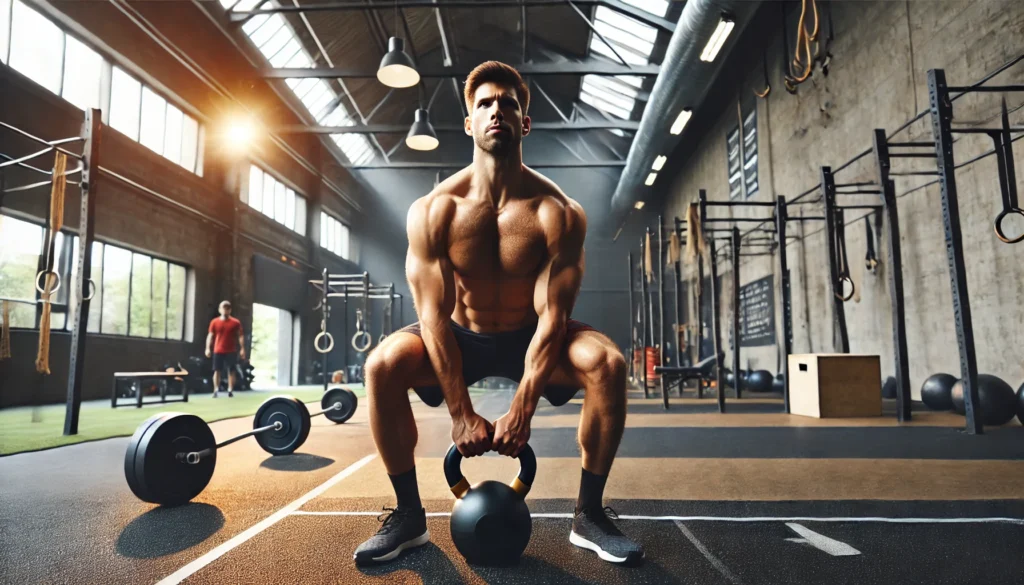The Importance of a Functional Upper Body Workout
A well-structured functional upper body workout is essential for improving strength, mobility, and endurance, all of which contribute to overall physical performance and daily functionality. Unlike traditional weightlifting routines that isolate specific muscles, functional training focuses on movement patterns that mirror real-world activities. This approach ensures that muscles work together synergistically, leading to improved coordination and efficiency in movement.
Functional exercises emphasize the importance of compound movements that engage multiple muscle groups simultaneously. By incorporating exercises that target the shoulders, chest, arms, and back, individuals can build a more resilient upper body that is capable of handling everyday tasks such as lifting, pushing, and pulling. This type of training is particularly beneficial for preventing injuries, as it enhances joint stability and muscle endurance.
Beyond strength and endurance, functional upper body exercises improve posture and alignment. Many individuals experience postural imbalances due to prolonged sitting, poor ergonomics, or repetitive motions. Functional training corrects these imbalances by reinforcing proper movement mechanics and engaging stabilizing muscles. This not only reduces discomfort but also enhances overall mobility and flexibility.
You May Also Like: Functional Strength Training: The Key to Mobility, Power, and Everyday Performance
Key Benefits of Functional Upper Body Exercises
One of the primary advantages of functional upper body training is the development of integrated strength. Traditional weightlifting often isolates muscles, whereas functional training enhances how muscles interact. Exercises such as push-ups, pull-ups, and overhead presses improve the ability to generate force in a coordinated manner, leading to more efficient and powerful movement patterns.
Another crucial benefit is enhanced mobility. Functional upper body exercises incorporate dynamic movements that improve joint flexibility and range of motion. This is particularly important for individuals who experience stiffness or restrictions in their shoulders and arms. Movements like rotational presses, kettlebell swings, and band pull-aparts help improve shoulder mobility while reinforcing stability.
Additionally, functional training promotes core engagement. Many upper body exercises require significant core activation to maintain balance and control. Exercises such as renegade rows and medicine ball throws not only develop upper body strength but also enhance core stability, making movement more fluid and controlled. A strong core contributes to better posture, reduced back pain, and improved overall athletic performance.

Essential Functional Upper Body Exercises for Strength and Mobility
A well-rounded functional workout should include movements that engage the shoulders, chest, arms, and back while reinforcing proper movement patterns. One of the most effective exercises is the overhead press. This movement strengthens the shoulders, triceps, and upper back while improving coordination and stability. Performing the overhead press with kettlebells or dumbbells requires additional core engagement, enhancing overall control and balance.
Push-ups are another staple in functional training, offering full-body engagement with a focus on the chest, triceps, and shoulders. Variations such as incline push-ups, decline push-ups, and single-arm push-ups challenge different muscle groups while promoting shoulder stability. Incorporating resistance bands can further enhance the difficulty and effectiveness of this exercise.
Pulling movements such as pull-ups, inverted rows, and lat pulldowns strengthen the back and improve grip strength. These exercises mimic natural pulling motions, making them highly beneficial for daily activities that require upper body endurance. Additionally, incorporating rows with resistance bands or dumbbells helps improve scapular stability and reduces the risk of shoulder injuries.
How Functional Training Improves Everyday Performance
Functional training bridges the gap between traditional strength training and real-world applications. Whether carrying groceries, lifting a child, or reaching overhead, a strong upper body enhances movement efficiency and reduces the risk of strain. By developing strength in multiple planes of motion, individuals become more capable of handling diverse physical demands.
One of the most overlooked aspects of functional training is grip strength. Many functional upper body exercises require a strong grip, which translates into better performance in daily tasks such as opening jars, carrying bags, or performing manual labor. Dead hangs, farmer’s carries, and forearm curls are excellent exercises for improving grip strength and endurance.
Postural improvements are another key benefit of functional upper body training. Many individuals suffer from forward-rounded shoulders due to prolonged desk work and screen time. Strengthening the posterior chain with exercises like face pulls, band pull-aparts, and rear delt raises can counteract poor posture and alleviate tension in the neck and upper back.

Structuring a Functional Upper Body Workout for Maximum Results
To create an effective functional upper body workout, it is essential to include a variety of movement patterns that target different muscle groups. A well-structured routine should incorporate pushing, pulling, rotational, and stabilization exercises to ensure balanced muscle development.
A proper warm-up should precede any upper body workout to prepare the muscles and joints for movement. Dynamic stretches such as arm circles, shoulder dislocations, and thoracic rotations help improve mobility and prevent injuries. Activating stabilizing muscles through band exercises or light resistance movements enhances readiness for more demanding exercises.
The main workout should include compound movements such as overhead presses, pull-ups, and dips, which develop strength and endurance. Incorporating kettlebell or dumbbell variations increases complexity and improves coordination. Core-engaging movements like renegade rows and rotational presses reinforce stability and movement control.
To finish the session, mobility exercises such as shoulder stretches, foam rolling, and deep breathing techniques aid in recovery and flexibility. Prioritizing mobility ensures that muscles remain supple and responsive, reducing the likelihood of stiffness or strain.

Frequently Asked Questions (FAQ) on Functional Upper Body Workouts
1. How does a functional upper body workout differ from traditional weightlifting?
A functional upper body workout focuses on multi-joint, compound movements that mimic real-world activities, whereas traditional weightlifting often isolates individual muscles. Functional exercises emphasize movement efficiency, coordination, and core stability, ensuring muscles work together rather than in isolation. This approach enhances balance and mobility, making everyday tasks such as lifting, reaching, and pushing easier. Traditional weightlifting, on the other hand, typically targets specific muscles to increase size and strength without necessarily improving functional movement patterns. Functional training promotes real-world strength that translates directly into daily life and athletic performance.
2. How can functional upper body exercises improve financial well-being in the long run?
Investing time in functional upper body exercises can help prevent costly medical bills associated with poor posture, muscle imbalances, and joint injuries. Many individuals spend money on physical therapy, chiropractic care, and pain management treatments due to years of movement inefficiency. By incorporating functional exercises that enhance joint stability and prevent injuries, individuals can reduce healthcare expenses over time. Additionally, a strong and mobile upper body can lead to increased productivity at work, particularly for those in physically demanding professions. A proactive approach to fitness ensures long-term health, reducing financial burdens related to medical treatments and lost workdays.
3. Can functional upper body workouts enhance mental resilience and cognitive function?
Yes, a functional upper body workout improves mental resilience by engaging neuromuscular coordination, focus, and problem-solving skills. Many functional movements, such as unilateral exercises or kettlebell drills, require concentration and precise muscle activation, stimulating brain function. Additionally, strength training has been shown to reduce stress, anxiety, and depression by releasing endorphins. Incorporating complex movement patterns strengthens the mind-body connection, improving reaction time and cognitive processing speed. Over time, individuals experience greater mental clarity, improved focus, and enhanced emotional resilience.
4. What are the best functional upper body exercises for reducing shoulder pain?
For individuals experiencing shoulder pain, functional upper body exercises that improve mobility and strengthen stabilizing muscles are essential. Exercises such as band pull-aparts, face pulls, and external rotation drills enhance scapular control and reduce shoulder impingements. Overhead carries and Turkish get-ups help build shoulder stability while reinforcing proper movement mechanics. Incorporating mobility exercises like wall slides and thoracic rotations can also improve range of motion and relieve tension. By strengthening supporting muscles and improving movement efficiency, functional training can alleviate pain and prevent future injuries.
5. How does grip strength factor into functional upper body training?
Grip strength is a crucial component of functional upper body exercises, as it plays a significant role in overall strength and endurance. Exercises such as dead hangs, farmer’s carries, and kettlebell swings strengthen grip muscles, which translates into improved lifting ability and hand endurance. A strong grip enhances performance in everyday tasks such as carrying groceries, opening jars, and lifting heavy objects. Additionally, research suggests that grip strength is a strong predictor of overall health and longevity. Including grip-intensive functional exercises in a workout routine builds long-term hand and forearm strength, preventing issues such as carpal tunnel syndrome and arthritis.
6. How can functional upper body workouts benefit individuals working desk jobs?
A functional upper body workout is particularly beneficial for individuals who spend long hours at a desk, as it helps correct posture and alleviate muscle imbalances. Prolonged sitting often leads to rounded shoulders, tight chest muscles, and weak upper back muscles, increasing the risk of chronic pain. Functional exercises such as face pulls, band pull-aparts, and scapular retractions strengthen postural muscles and counteract the effects of sitting. Additionally, integrating mobility exercises like thoracic rotations and doorway stretches improves flexibility and reduces tension. Regular functional training helps desk workers maintain better posture, reducing discomfort and long-term spinal issues.
7. What are the long-term benefits of a functional upper body workout for aging adults?
Aging adults greatly benefit from functional upper body workouts as they help maintain strength, mobility, and independence. Over time, muscle mass and joint flexibility decline, increasing the risk of falls and mobility limitations. Functional exercises that focus on pushing, pulling, and rotational movements preserve upper body strength for essential activities like carrying groceries, reaching overhead, and supporting body weight. Strengthening stabilizing muscles through functional training also reduces the risk of shoulder injuries and joint deterioration. Regular participation in functional workouts ensures that aging individuals retain their physical capabilities, promoting long-term independence and quality of life.
8. How can functional upper body exercises be adapted for injury recovery?
For individuals recovering from an injury, functional upper body exercises should focus on controlled, low-impact movements that restore strength and mobility. Resistance band exercises, such as banded rows and shoulder external rotations, provide gentle resistance without placing excessive strain on joints. Unilateral movements like single-arm presses and slow, controlled push-ups help rebuild coordination and stability. Mobility drills, including controlled arm circles and passive stretching, improve flexibility and range of motion. Progressing gradually from bodyweight movements to light resistance ensures a safe recovery while preventing further injury.
9. What role does core stability play in functional upper body workouts?
Core stability is a fundamental aspect of functional upper body workouts, as it enhances balance, posture, and force generation. Many upper body movements, such as overhead presses, push-ups, and pull-ups, require core engagement to maintain stability and prevent compensatory movements. Exercises like renegade rows, Pallof presses, and weighted carries integrate core activation with upper body strength, reinforcing movement efficiency. A strong core reduces strain on the lower back, improving posture and overall movement mechanics. Functional training ensures that the core and upper body work together to produce powerful, controlled movements.
10. How can beginners start incorporating functional upper body training into their routine?
Beginners can start functional upper body workouts by focusing on foundational movements that emphasize coordination and stability. Bodyweight exercises such as push-ups, plank variations, and assisted pull-ups develop strength without requiring heavy equipment. Resistance bands provide a safe way to introduce pulling and pressing motions while improving joint mobility. Gradually incorporating kettlebells or dumbbells for exercises like rows, presses, and carries enhances functional strength. Starting with controlled, low-rep sets and focusing on proper form ensures a smooth transition into more advanced functional training.
Conclusion: Unlocking the Full Potential of Functional Upper Body Training
A well-structured functional upper body workout enhances strength, mobility, and overall movement efficiency. Unlike traditional training methods that focus solely on isolated muscle groups, functional exercises integrate multiple muscle systems, improving coordination and real-world performance. By incorporating compound movements, core engagement, and stability exercises, individuals can develop a more resilient and adaptable upper body.
Engaging in functional upper body exercises promotes joint health, enhances posture, and reduces injury risk. The inclusion of pushing, pulling, and stabilizing movements ensures that muscles are trained in a balanced and effective manner. Whether aiming to improve athletic performance or simply enhance daily functionality, functional training provides a comprehensive and sustainable approach to upper body fitness.
By adopting a functional training approach, individuals can move more efficiently, maintain better posture, and develop long-lasting strength. Whether lifting, reaching, or carrying, a strong upper body contributes to greater confidence and independence in daily activities. Functional training is not just about building muscle—it is about enhancing movement quality and ensuring long-term physical vitality.
upper body mobility, strength and endurance, movement efficiency, resistance training, shoulder stability, joint health, posture improvement, core activation, grip strength, muscle coordination, functional movement patterns, athletic performance, injury prevention, kettlebell training, everyday strength, scapular stability, overhead press benefits, pushing and pulling exercises, real-world strength training, total-body integration
Further Reading:
Effect of Functional Training on Physical Fitness Among Athletes: A Systematic Review

